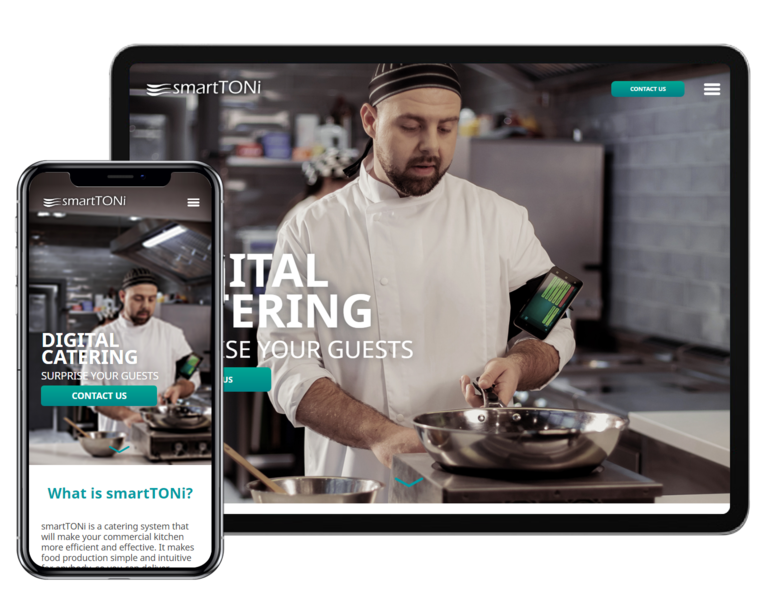SmarTONi : Making Restaurants Smart with PITS
Read MoreFor SmarTONi, the client approached us with a distinctive set of challenges in his kitchen, accompanied by a brilliant idea that blossomed into countless possibilities for leveraging technology.
His vision aimed to revolutionize the way chefs presented their culinary creations, ensuring that every dish delighted diner with consistent taste, flavor, texture, and aroma irrespective of the location and the chefs involved while ensuring minimal effort, time, and waste generated.
First phase – Converting recipes to automated tasks.
Initially, Smartoni operated as an intelligent task operation network designed specifically for catering kitchens. It acted as a virtual assistant for chefs and cooks, streamlining the entire process of meal preparation and delivery.
When an order was received, specifically when the order was printed for the chefs, the application server of Smartoni calculated the most efficient sequence of tasks required to fulfill the order. It would break down complex recipes into simple, step-by-step instructions, allowing even less experienced kitchen staff to start working on basic tasks right away.
Each cook in the kitchen had access to a voice-controlled personal display, which was an Android device attached to their arm. This display showed the tasks assigned to them, ensuring efficient task management and enabling cooks to focus on their specific responsibilities. This allowed the chefs to cook even though they were unaware of the end product.
The chef selected for each task was assigned based on their availability. Once they completed their task, they would receive the next task to move the product to the next available chef's table.
But soon, some experienced chefs expressed their desire to handle the entire recipe on their own rather than working on small individual tasks. This led to the introduction of another mode - The Recipe mode, where the experienced chef has the freedom to prepare the entire dish independently.
Second phase - POS and Billing System.
As we made progress, the client expressed their desire to enhance the point-of-sale (POS) system for taking orders. Instead of relying on printed orders, they wanted the orders to be sent directly to the application server from the customers themselves. This was achieved by implementing a QR code scanning feature for the menu, enabling customers to conveniently place their orders and complete the transaction through the POS system.
In addition to the improved order placement process, the client also requested the implementation of an automated billing system. This addition streamlined the payment process, allowing for seamless and efficient transactions. These two new integrations not only saved time but also provided valuable insights into customers' preferences for different food items, especially for repeat customers.
Third phase – Inventory Management
In the third phase, we implemented technology-driven solutions for inventory management.
Purchasing: Our system gathers real-time information on ingredient availability and prices, considering delivery conditions, stock levels, and the sales plan. Also, it generates accurate purchase orders based on this data.
Warehouse management: Our digital platform ensured transparency and accessibility to all mise-en place stocks and ingredients. It utilized barcode scanning or RFID tags to monitor and update inventory levels automatically.
Fourth Phase – Utilizing Data for AI
In this stage, we focus on optimizing our processes by collecting valuable data on recipe preparation, chef time, user feedback, chef efficiency, customer reactions, and patterns such as arrival days and ordering frequency. We currently have a dedicated team that collects data from live restaurants and trains our AI systems. Once we gather sufficient data, we plan to expand the team and prioritize technology integration driven by data analysis.
Data plays a crucial role in decision-making within Smartoni. Kitchens can plan their days in advance, delegate tasks effectively, distribute resources optimally, and utilize equipment to its full potential. The system takes into account factors such as skill set, workload, and team synergies to optimize kitchen operations.



